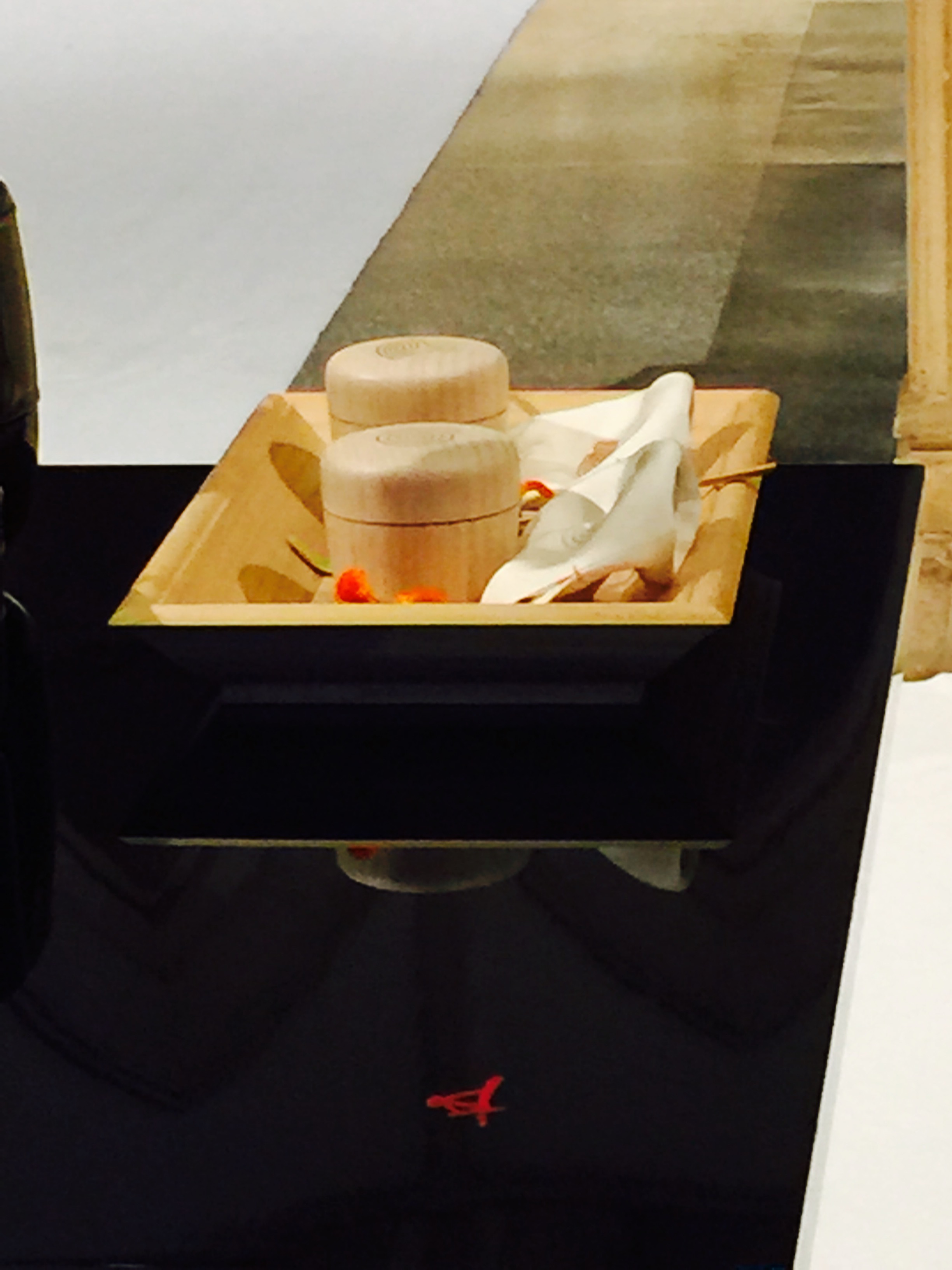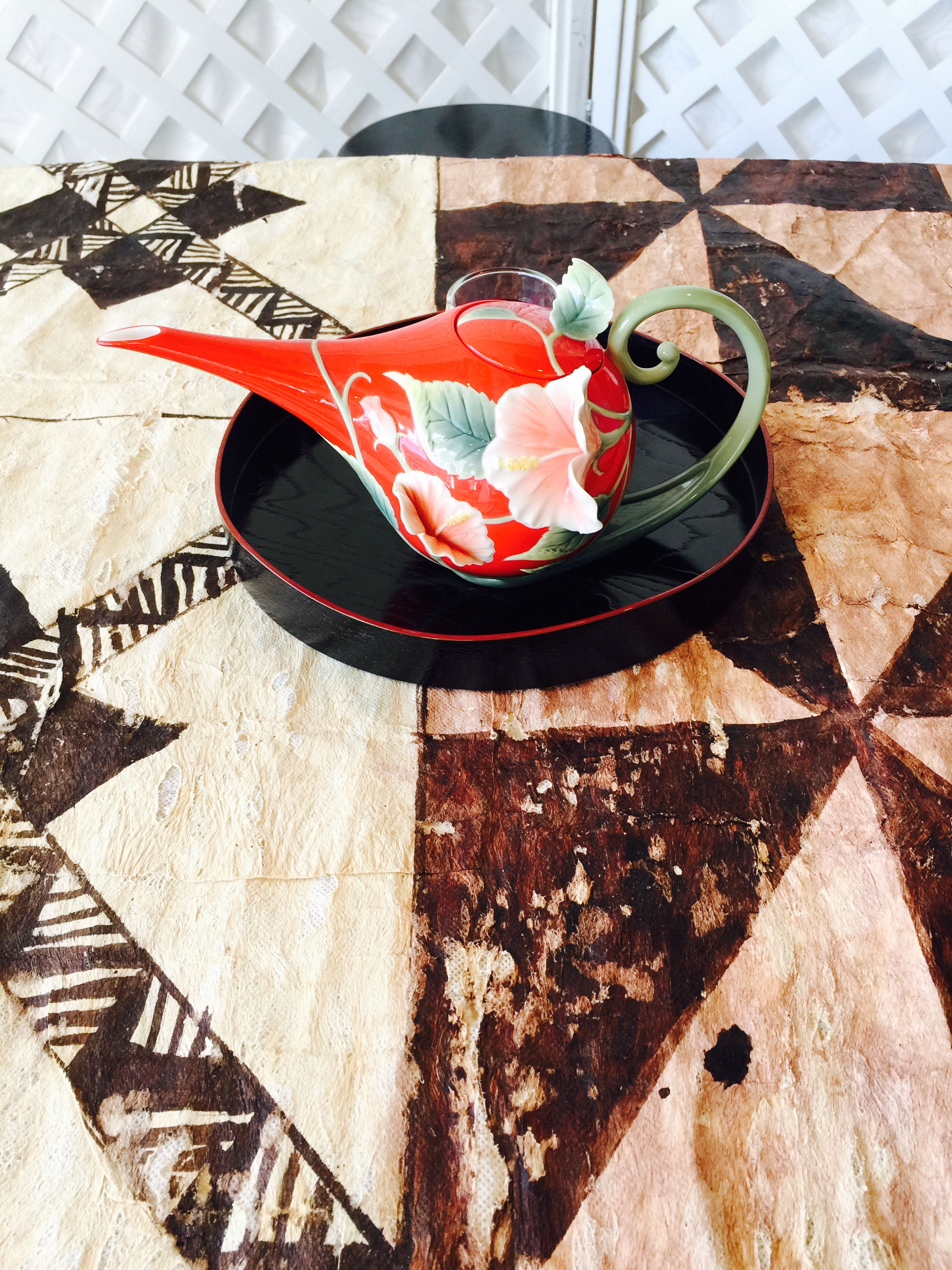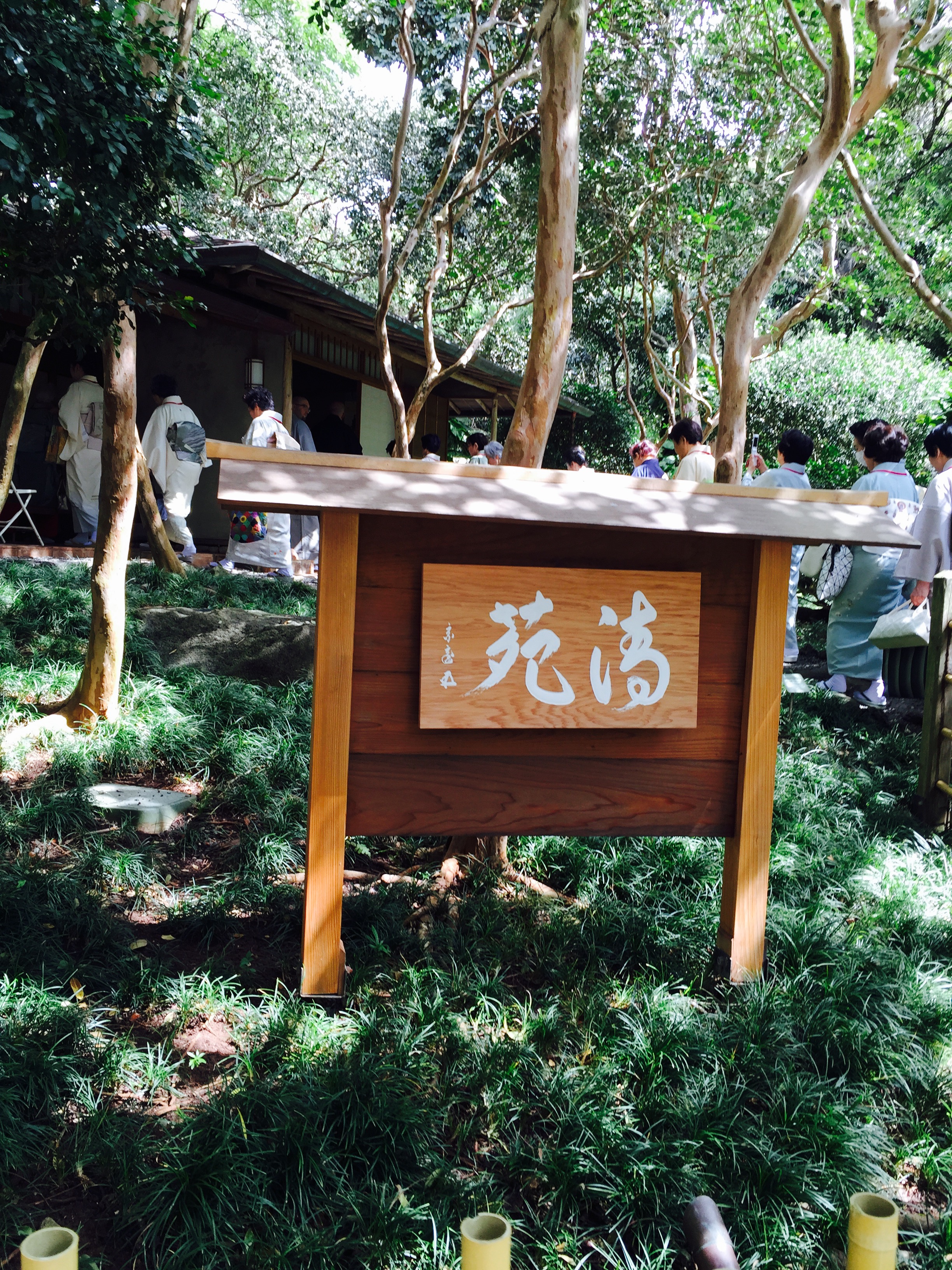Origins
Tea From China

The drinking of tea was introduced to Japan from China where, by the eighth century, the tea plant was valued for its medicinal properties. Tea was also used as a stimulant by Zen Buddhist monks. Zen (Chinese: Chan) arose in China in the sixth century, and means literally "meditation." The Zen path to spiritual insight requires that monks meditate for extended periods in their effort to attain the enlightenment experienced by the Buddha. Chinese monks found tea helped them maintain concentration during these long sessions, and drinking the beverage became a common feature of Chinese monastic life. Through contacts with monks from China, the custom began to spread to Buddhist temples in Japan. During the Heian period (794-1185) it became a favorite social pastime of Japanese emperors and aristocrats.
Tea In Japan
It was not until the Kamakura period (1185-1333), however, that tea drinking, along with Zen, became widespread in Japan. From the late twelfth century onward, Zen exerted an enormous impact on Japanese society and was embraced by the warrior elite, which during this period wrested military and political control of the country from the imperial court. Zen temples were established throughout Japan, often under warrior patronage. Japanese monks who traveled to study at Chinese monasteries returned home extolling the advantages of tea, and in 1191 the monk Eisai brought back seeds of the Chinese tea plant to Japan. In Zen monasteries tea was also served ceremoniously to important visitors. Thus tea drinking spread outside the monastery walls, and was adopted by the shoguns (warrior rulers) and daimyo (feudal barons) who from 1185 to 1868 controlled Japan.
The tea gatherings held in the castles and mansions of shoguns and daimyo in the Kamakura and Muromachi (1333-1573) periods had little in common with the austere tea rites practiced within monasteries. The warrior elite invited guests to engage in tea-tasting contests (tocha), in which participants attempted to distinguish various kinds of regional teas, with the winners awarded elaborate prizes. Equally important was the connoisseurship of fine tea utensils and works of art, with those from China held in the highest regard. Chinese wares were so avidly collected that the services of a cultural advisor were often required. Known as doboshu, these advisors acted as curators who also prepared and served the tea to the guests.
Some gatherings lasted for days and included poetry composition, dance performances, boat rides, athletic events, and formal banquets. The lavishness of these social affairs is known from contemporary accounts, which describe guests seated on leopard skins before tables draped with gold brocade. Often as much sake was consumed as tea. Eventually, these events became so sumptuous and raucous that they were banned by the government.
Early Tea Masters
The tea master Murata Shuko (1423-1502) reacted against the flamboyant, ostentatious customs that had grown up around tea and, through his study of Zen, sought to simplify the tea gathering. His ideas were developed further by Takeno Joo (1502-1555) and, especially, Sen No Rikyu (1522-1591), tea master to the warrior rulers Oda Nobunaga (1534-1582) and Toyotomi Hideyoshi (1537-1598). Rikyu was born into a merchant family, reflecting the rising interest in tea on the part of wealthy townsmen in the sixteenth century. He was deeply influenced by the contemplative atmosphere surrounding monastic tea rites, and he perfected the style of tea called wabi, which is characterized by cultivated restraint, rustic simplicity, and an air of assumed poverty. Preferring to host small gatherings, Rikyu humbly prepared and served the tea himself in a simple, tranquil setting. Alongside the refined Chinese teabowls and utensils then in vogue, Rikyu favored humbler domestic wares. In teabowls known as Raku ware, such as those hand molded by Chojiro, he saw an unpretentious, austere beauty that mirrored his style of tea.
After Rikyu's death in 1591, his student Furuta Oribe (1544-1615) emerged as the preeminent tea master in Japan. Oribe was tea instructor to the shoguns Tokugawa Hidetada (1579-1632) as well as his father Leyasu (1543-1616) who united the daimyo under his rule. The Tokugawa shogunate ushered in a period of peace and political stability that would last until 1868. Oribe, a daimyo himself, favored a more elegant style of tea than the pure wabi of his teacher. Although he too admired domestic tea wares, the ceramics associated with his name are more colorful and less severe than those preferred by Rikyu. The brightly glazed black and iridescent green tea wares from Mino reflect Oribe's more playful and decorative tastes. Often molded in innovative shapes, these wares were especially fashionable among daimyo tea practitioners.
This text appeared in a brochure entitled Japan: The Art of the Tea Ceremony, which was produced in conjunction with the exhibition "Japan: The Shaping of the Daimyo Culture 1185-1868" at the National Gallery of Art in Washington, D.C.Birthplace of Rikyu Images
Philosophy

The Zen of Tea
Tea is about using all your senses in order to notice beauty that ordinarily is overlooked. The sound of the kettle murmuring has been likened to the sound of wind blowing through the pines. As the electric coils of the "fire" begin to glow, the smell of incense is released, purifying the room and the spirit. The utensils have been selected to present an ensemble of textures, colors and images to the guests. And finally, there is the fragrance of the tea as it is being whisked by the host, followed by the first sip of this agelessly rejuvenating beverage.
Seven Rules
Make a delicious bowl of tea. Place the charcoal so that the water will boil quickly. Arrange the flowers as they grow in the field. Keep the tearoom cool in summer, warm in winter. Have everything ready ahead of time. Be prepared for rain. Give your guests every consideration - Sen no Rikyu (1522-1591)Chaji

Formal Tea
The early tea masters had a lasting impact on the tea gathering. Several schools preserve the tradition today: Omote Senke, Ura Senke, and Mushanokoji Senke, each founded by descendants of Rikyu, as well as the Yabunouchi school established by Oribe's brother-in-law Kenchu. All practice the formal tea gathering, chaji, with minor technical differences in the procedures for preparing and serving the tea. The complete chaji can last three to four hours and includes the serving of thick tea, thin tea, and a formal meal.
Preparations by the Host
The host first decides the theme of the gathering, which can be as simple as the passing of the seasons. Mindful of the occasion, he then selects the tea utensils appropriate to his guests. The principal guests might be honored with a tea bowl having an illustrious pedigree such as the white Seto bowl formerly owned by the sixteenth-century tea master Takeno Joo, and later by the warrior ruler Toyotomi Hideyoshi and the daimyo Hosokawa Sansai (1563-1646). The host also chooses the scroll to hang in the alcove of the tearoom, providing its principal decoration and establishing the mood of the gathering. Favorite subjects were landscapes such as that by Murata Shuko, which captures the sense of being drawn deep into the mountains, away from worldly pressures. Calligraphic verses could convey a similar sense of detachment, as in the Zen abbot Seigan Soi's "White clouds come and go by themselves." With the scroll, the host might also display precious ceramics or other works of art. The carefully considered ensemble in the tokonoma is vital to the aesthetics of the tea ceremony, in which every detail is calculated to please and soothe the eye.
Arrival of Guests
The guests proceed down the tea garden path, pausing to cleanse their hands at the water basin before stooping to crawl into the tearoom. Once inside, each guest in turn proceeds to the alcove to admire the scroll chosen for that day and view the works of art exhibited in the tokonoma. The last guest to enter shuts the small sliding door with an audible click to signal the unseen host that all have arrived.
Charcoal Ceremony
After exchanging greetings, the host begins the ritual of building the fire for the tea kettle and brings forth the charcoal container. This utensil contains the equipment necessary for the charcoal ceremony: carefully arranged pieces of charcoal, metal lifters for removing the tea kettle, a kettle mat, metal chopsticks for handling the charcoal, a feather to brush away ashes, and a container for the pieces of incense that are placed in the fire to permeate the room with fragrance. The host also uses a special bowl and spoon to prepare the carefully laid bed of ash in the sunken hearth or the brazier. While the fire is being prepared the guests admire the utensils and works of art, commenting on their aesthetic qualities and provenance. The lacquered charcoal container formerly owned by the daimyo tea master Kobori Enshu (1579-1647) was made in Thailand, reflecting the eclecticism of tea utensil collections, which could include objects from Southeast Asia, the Middle East, China, Korea, and even Europe. The host contributes to the conversation, recounting such stories as that associated with the hammer-style iron tea kettle. According to legend, Rikyu, who saw beauty in the imperfect, deliberately gave this kettle a few taps with a hammer to enhance its charm.
Kaiseki and Sweets
Following the placing of the charcoal, the guests are served kaiseki, a formal meal developed specifically for the tea gathering. Influenced by the meal served in Zen temples, kaiseki usually avoids meat and consists of fish, rice, and vegetables aesthetically arranged against a background of ceramic and lacquered dishes. Large plates, such as the one with a design of peonies by Kenzan (1663-1743), might be used to pass around a large grilled fish, while morsels of raw fish could be served in the small individual dishes called mukozuke. Sake, a rice liqueur, is served throughout the meal. At the end, sweets are eaten to prepare the palate for the bitter tea that will follow. By this time, a few hours have passed and the guests retire to the garden while the host begins preparations for the thick tea ceremony.
Thick Tea Ceremony
The drinking of thick tea and thin tea represent two distinct stages of the ceremony. Although powdered green tea (matcha) is used for both, the tea for the thick tea ceremony is made only from the tips of the newest leaves from a mature tea plant. Using a bamboo whisk, thick tea is prepared by mixing tea with just enough water to produce the proper consistency. The tea is prepared in a single bowl shared by all the guests, each of whom carefully wipes the rim before passing it on. After drinking the tea, the guests again discuss the utensils, with the principal guest asking first to examine the tea container and the bamboo tea scoop. Other necessary utensils include cold-water jars for refilling the kettle, and waste-water bowls for discarding the water used to clean the teabowl and whisk at the end of the ceremony.
Thin Tea Ceremony
Thin tea is made from plants younger than those used for thick tea. Except that more water is used for thin tea, both types are prepared by whipping the mixture with a whisk rather than by steeping. The thin tea powder might be purchased from a grower other than the one who provided the thick tea powder, to offer guests a different taste as well as texture. Thin tea containers often are decorated with seasonal designs, and the tea is served in individual bowls. The thin tea ceremony concludes the chaji.
